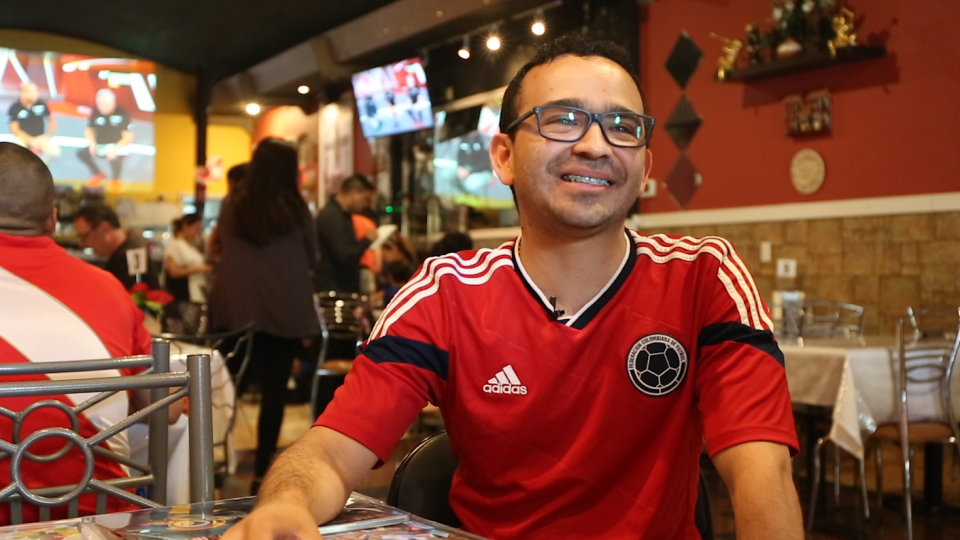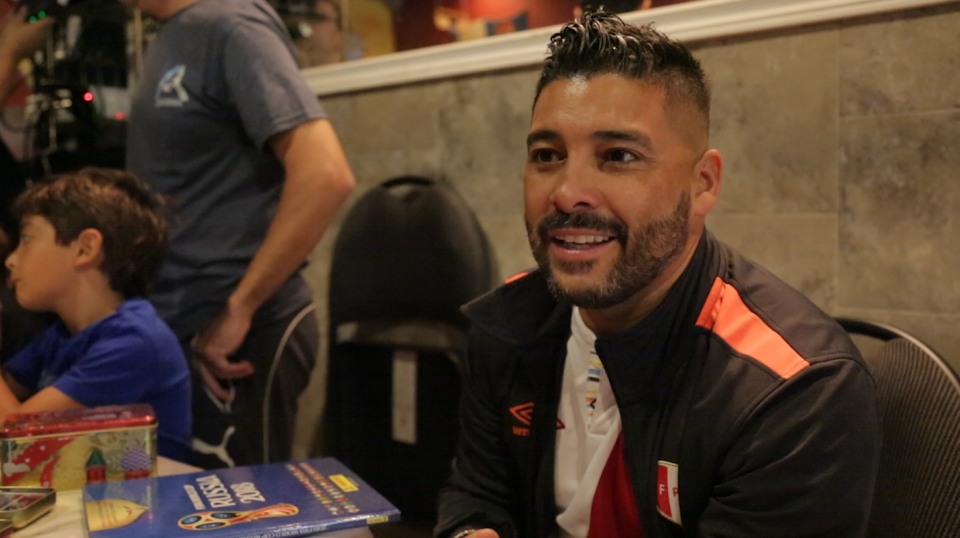Passion for Panini: The sticky side of the World Cup
“I believe I’m going to be doing this until I die.”
At first glance, Gustavo Jimenez is similar to many soccer fans from across the world who have made a new life in North America. Passionate about the game, loyal to his home colours and obsessed with the World Cup.
Wearing the red and dark blue of his native Colombia, we meet Gustavo on the eve of the global tournament at Me Sabe a Peru, a Peruvian restaurant in a strip mall north of Toronto. A group of middle-aged men are gathered around the top table and our host salutes us as we escape inside from an already humid Saturday morning.
Behind Gustavo’s beaming grin, I see what we came looking for. The hallmarks of a true World Cup obsessive, nurtured since childhood, refound as an adult in a new country.
Binders and binders full of stickers reveal a rarely seen side of soccer culture in Canada and a remarkable global phenomenon — the Panini World Cup sticker album.
First published for the 1970 competition in Mexico, Panini now distributes to 125 countries and sells on average one billion stickers every year — ready to be traded on street corners, in playgrounds, on office lunch breaks and even in Peruvian restaurants in Toronto. Collecting stickers and completing the album has become part of World Cup tradition and a vital part of the experience for those watching their nations play for the biggest prize of all from afar.

For Gustavo, however, the magic seemed to have dried up when he moved to Canada in 2007. Hockey stickers and baseball cards had mass appeal but Panini was nowhere to be found. In 2014, the 34-year-old finally tracked down a supplier and set up a Facebook group to spread the word. Panini Soccer Collectors Canada now has 800 subscribers, hosting trading meet-ups three times a week in the lead up to the World Cup.
Officially partnered with FIFA, Panini albums feature a sticker for every player on every team playing at the World Cup, along with harder-to-find team photo and crest stickers. They are mostly traded like for like but money does change hands, though usually below the $5 mark.
Back in Colombia, during the USA 1994 World Cup, Gustavo’s mother would give him 10 cents each day to buy his lunch but the 10-year-old had other ideas.
“I didn’t eat. I took that money to buy the packs,” said Gustavo bashfully. “That’s why I’m so skinny!”
What is immediately striking about the trading culture in the restaurant is its intergenerational nature. Mothers and sons, fathers and daughters, grown men next to grown men. Around the table, everyone meets as an equal, each with their personal list of duplicate and coveted stickers. The adults tend to use the ID number on the back of each sticker to keep track, while younger collectors are on the lookout for faces — Cristiano, Falcao, Neymar.

For Juan Diego Cardenas, the Russia 2018 album is his first. His native Peru is appearing at the tournament after a 36-year wait and as for many who don’t remember seeing their countrymen on the greatest stage, the moment has reignited a passion bubbling below the surface.
“It’s people of my age that are actually excited about the book because we didn’t have the chance to do that before,” said the 40-year-old, sporting a Peruvian jersey and jacket for the occasion.
“It brought out the child in me.”

Juan Diego epitomizes one particular aspect of the Panini phenomenon in the diasporic context. Everyone we spoke to at Me Sabe a Peru saw the collection of stickers and ultimately the completion of the album as an extension of their fandom and patriotism, and as a antidote to a longing for home.
“Like everything else, we find every little thing to bring us back to Peru,” said Cardenas.
For Gustavo, just seeing his personal passion grow into a community across Toronto and beyond brings him joy, but from childhood to today, every four years, it comes down to one thing — going on a journey.
“We can’t go to the World Cup because it’s so expensive, so this is our way to be part of it.”
More World Cup on Yahoo Sports

 Yahoo Sports
Yahoo Sports 

